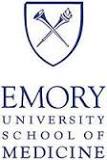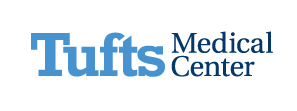Functional Impact of GLP-1 for Heart Failure Treatment (FIGHT)
| Status: | Completed |
|---|---|
| Conditions: | Cardiology |
| Therapuetic Areas: | Cardiology / Vascular Diseases |
| Healthy: | No |
| Age Range: | 18 - Any |
| Updated: | 2/16/2017 |
| Start Date: | April 2013 |
| End Date: | October 2015 |
Functional Impact of GLP-1 for Heart Failure Treatment
The primary objective is to test the hypothesis that, compared with placebo, therapy with
Subcutaneous (SQ) GLP-1 agonist in the post-Acute Heart Failure Syndrome (AHFS) discharge
period will be associated with greater clinical stability at six months as assessed by a
composite clinical endpoint.
Subcutaneous (SQ) GLP-1 agonist in the post-Acute Heart Failure Syndrome (AHFS) discharge
period will be associated with greater clinical stability at six months as assessed by a
composite clinical endpoint.
Hospitalization for AHFS identifies individuals at increased risk of death and
re-hospitalization following discharge. This increased risk justifies intervention with
novel therapy during the vulnerable post-discharge period to enhance clinical stability and
prevent early HF mortality and readmissions.
As heart failure (HF) progresses, impairments in metabolism render the heart substrate
constrained, limiting cardiac metabolism. Glucagon-like peptide-1 (GLP-1) is a naturally
occurring incretin peptide that enhances cellular glucose uptake by stimulating insulin
secretion and insulin sensitivity in target tissues. Preclinical and early-phase clinical
data support GLP-1 as an effective therapy for advanced HF while use of GLP-1 receptor
agonists in large numbers of patients with diabetes reveal a good safety profile and
reductions in adverse cardiac outcomes.
re-hospitalization following discharge. This increased risk justifies intervention with
novel therapy during the vulnerable post-discharge period to enhance clinical stability and
prevent early HF mortality and readmissions.
As heart failure (HF) progresses, impairments in metabolism render the heart substrate
constrained, limiting cardiac metabolism. Glucagon-like peptide-1 (GLP-1) is a naturally
occurring incretin peptide that enhances cellular glucose uptake by stimulating insulin
secretion and insulin sensitivity in target tissues. Preclinical and early-phase clinical
data support GLP-1 as an effective therapy for advanced HF while use of GLP-1 receptor
agonists in large numbers of patients with diabetes reveal a good safety profile and
reductions in adverse cardiac outcomes.
Inclusion Criteria:
1. Age ≥ 18 years
2. AHFS as defined by the presence of at least 1 symptom (dyspnea, orthopnea, or edema)
AND 1 sign (rales on auscultation, peripheral edema, ascites, pulmonary vascular
congestion on chest radiography)
3. AHFS is the primary cause of hospitalization
4. Prior clinical diagnosis of HF
5. Left Ventricular Ejection Fraction(LVEF) ≤ 40% during the preceding 3 months (if no
echo within the preceding 3 months, an LVEF ≤ 30% during the preceding three years is
acceptable)
6. On evidence-based medication for HF (including beta-blocker and ACE-inhibitor/ARB) or
previously deemed intolerant
7. Use of at least 80 mg or furosemide total daily dose (or equivalent) prior to
admission for AHFS (a lower dose of a loop diuretic combined with a thiazide will
count as an "equivalent")
8. Willingness to provide informed consent
Exclusion Criteria:
1. AHFS due to acute myocarditis or acute Myocardial Infarction
2. Ongoing hemodynamically significant arrhythmias contributing to HF decompensation
3. Inotrope, intra-aortic balloon pump (IABP) or other mechanical circulatory support
use at the time of consent. Prior use will not exclude a patient.
4. Current or planned left ventricular assist device therapy in next 180 days
5. United Network for Organ Sharing status 1A or 1B
6. B-type natriuretic peptide(BNP)< 250 or NT-proBNP<1,000 (Not required per protocol
but if available and too low would be an exclusion; within 48 hours of consent)
7. Hemoglobin (Hgb) < 8.0 g/dl
8. Glomerular filtration rate(GFR) < 20 ml/min/1.73 m2 within 48 hours of consent
9. Systolic blood pressure < 80 mmHg at consent
10. Resting Heart Rate > 110 at consent
11. Acute coronary syndrome within 4 weeks as defined by electrocardiographic (ECG)
changes and biomarkers of myocardial necrosis (e.g. troponin) in an appropriate
clinical setting (chest discomfort or anginal equivalent)
12. Percutaneous Coronary Intervention, coronary artery bypass grafting or new
biventricular pacing within past 4 weeks
13. Primary hypertrophic cardiomyopathy
14. Infiltrative cardiomyopathy
15. Constrictive pericarditis or tamponade
16. Complex congenital heart disease
17. Non-cardiac pulmonary edema
18. More than moderate aortic or mitral stenosis
19. Intrinsic (prolapse, rheumatic) valve disease with severe mitral, aortic or tricuspid
regurgitation
20. Sepsis, active infection (excluding cystitis) or other comorbidity driving the HF
decompensation
21. Acute or chronic severe liver disease as evidenced by any of the following:
encephalopathy, variceal bleeding, International Normalized Ration (INR) > 1.7 in the
absence of anticoagulation treatment
22. Terminal illness (other than HF) with expected survival of less than 1 year
23. Previous adverse reaction to the study drug
24. Receipt of any investigational product in the previous 30 days.
25. Enrollment or planned enrollment in another randomized therapeutic clinical trial in
next 6 months.
26. Inability to comply with planned study procedures
27. Pregnancy or breastfeeding mothers
28. Women of reproductive age not on adequate contraception
29. History of acute or chronic pancreatitis
30. History of symptomatic gastroparesis
31. Familial or personal history of medullary thyroid cancer or multiple endocrine
neoplasia type-2 (MEN2)
32. Prior weight-loss surgery (i.e., Roux-en-Y gastric bypass) or other gastric surgery
associated with increased endogenous GLP-1 production
33. Prior or ongoing treatment with GLP-1 receptor agonists
34. Ongoing treatment with dipeptidyl peptide-IV inhibitors (1 week washout required)
35. Ongoing treatment with thiazolidinedione
36. Oxygen-dependent chronic obstructive pulmonary disease
37. Diabetic patients with history of 2 or more severe hypoglycemia, Diabetic
Ketoacidosis(DKA) or hyperglycemic, hyperosmotic nonketotic coma in the preceding 12
months.
38. Diagnosis of Type 1 Diabetes Mellitus
40. If diabetic, inadequate glycemic control with glucose level > 300 mg/dL within 24
hours of randomization
We found this trial at
25
sites
Intermountain Medical Center Intermountain Medical Center is one of the most technologically advanced and patient-friendly...
Click here to add this to my saved trials
Emory University School of Medicine Emory University School of Medicine has 2,359 full- and part-time...
Click here to add this to my saved trials
Brigham and Women's Hosp Boston’s Brigham and Women’s Hospital (BWH) is an international leader in...
Click here to add this to my saved trials
Click here to add this to my saved trials
Tufts Medical Center Tufts Medical Center is an internationally-respected academic medical center – a teaching...
Click here to add this to my saved trials
Cleveland Clinic Cleveland Clinic is committed to principles as presented in the United Nations Global...
Click here to add this to my saved trials
Duke University Younger than most other prestigious U.S. research universities, Duke University consistently ranks among...
Click here to add this to my saved trials
Washington University Washington University creates an environment to encourage and support an ethos of wide-ranging...
Click here to add this to my saved trials
Johns Hopkins Hospital Patients are the focus of everything we do at The Johns Hopkins...
Click here to add this to my saved trials
Click here to add this to my saved trials
Click here to add this to my saved trials
Click here to add this to my saved trials
Click here to add this to my saved trials
Click here to add this to my saved trials
Click here to add this to my saved trials
Click here to add this to my saved trials
Click here to add this to my saved trials
Click here to add this to my saved trials
Click here to add this to my saved trials
Temple University Hospital On January 18, 1892 a three-story house at 3403 North Broad Street...
Click here to add this to my saved trials
Click here to add this to my saved trials
Click here to add this to my saved trials
Click here to add this to my saved trials
Click here to add this to my saved trials
Click here to add this to my saved trials









